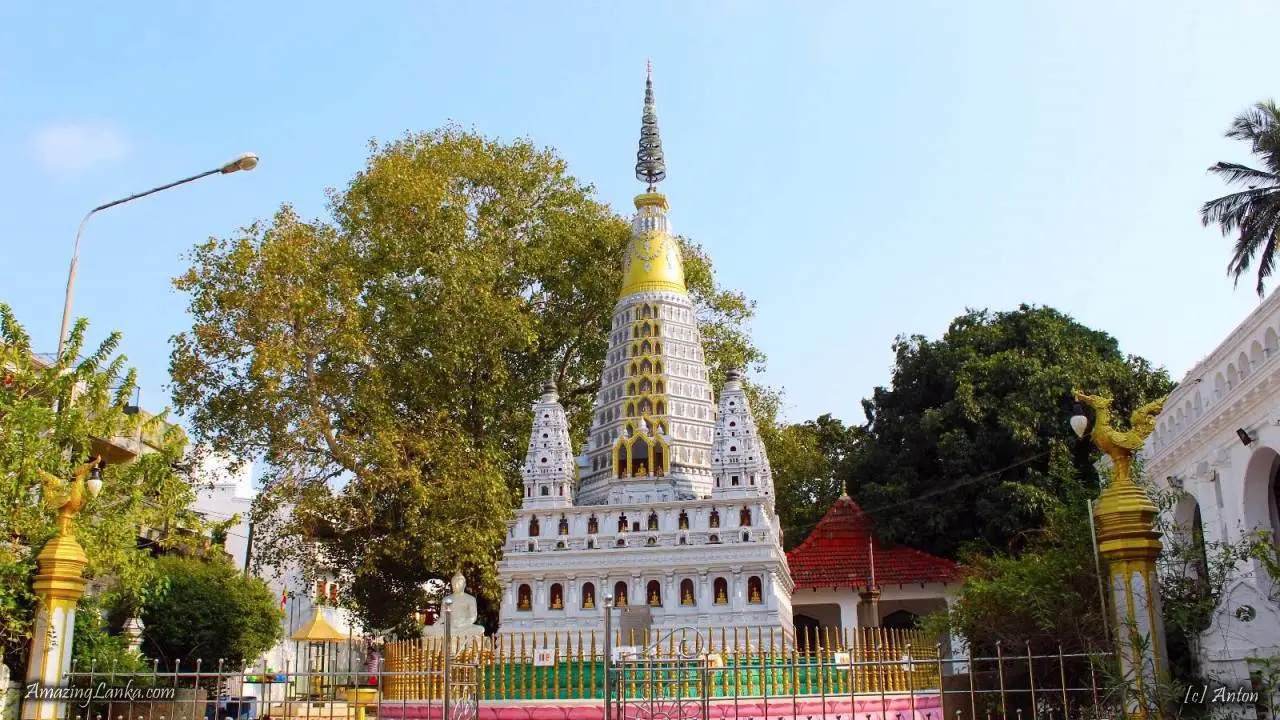- Area: Sri Lanka
- Type: Attractions
- Group: Buddhism Dutch period Viharaya
It was a temple where Sri Lankan Buddhist history was made. Deepaduttaramaya built initially in 1785 was the first Buddhist temple in Colombo and was home to Ven. Migettuewatte Sri Gunananda Thera, the leader of the famous ‘Panadura Vadaya’ and a great orator. It was where the Buddhist flag was designed and hoisted for the first time and the temple where generations of Thai royalty had worshiped and bestowed gifts and donations since the early 20th century.
The temple was built during the Dutch period when the ruling Dutch authorities did not approve the construction of a temple within the territory when Buddhists had to travel to Kelaniya or to Kotte for worship. However, Mudliyar Thabrew Ubayakulatunga Wijesiriwardhana succeeded in convincing Dutch Governor, Von Engel Beck, to grant him permission to build a temple as an extension to his house. He dedicated the newly built temple to Ven. Seenigama Dhammarakkitha Thera. Those were the glorious days of Deepaduttaramaya. A branch of the Jaya Sri Maha Bodhi in India was negotiated by Mahantha, who was in charge of the place and was planted at the temple in the late 18th century and it became a place of worship to many Buddhists in Colombo.
However, for nearly 70 years Deepaduttaramaya was in deterioration when Migettuwatte Sri Gunananda Thera, came to its rescue. Many years of colonial rule had destroyed the temple and the bo tree and it was no longer a place of worship.
The Deepaduttaramaya was given a fresh look and a new life under the leadership of Ven. Gunananda Thera became the front base in the battle for the revival of Buddhism in Sri Lanka.
The shrine room was given a new face with a unique decoration in the shape of a ‘thorana’ with the British Royal emblem, which can be found only at Deepaduttaramaya.
Under the leadership of Ven. Gunananda Thera, the Deepaduttaramaya was buzzing with anti-colonisation activities. Foreign and local movements against British rule gathered at Deepaduttaramaya to plot their next move and the first victory against British rule came in the form of Panadura Vadaya, a debate between Christian and Buddhist groups.
The debate sought to establish Buddhism as a religion with a deep-rooted spiritual, moral, and scientific background, which could be proved through research and discussion and to acquire the reverence it deserves by the British rulers and the international community in general.
The second success recorded at Deepaduttaramaya was the declaration of Vesak Poya as a public holiday. It all started when a Buddhist Perahera was organized by Ven. Gunananda Thera from Borella Temple to Deepaduttaramaya on March 25, 1883, which was a Vesak full moon Poya. The Perahera instigated much violence on its way and the attack was known as ‘Kotahena Keralla’ or the revolt at Kotahena. The revolt took one life but the police failed to arrest the attackers. The sheer violence of the attack and the inertness of the police attracted international attention and an investigation committee consisting of Buddhist and colonial representatives was appointed.
Representations made by foreign and local Buddhists to the Queen and the governor through the committee triggered the declaration of Vesak Full Moon Poya Day as a public holiday on April 25, 1885. The newly designed five-color Buddhist flag was hoisted at Deepaduttaramaya for the first time that day to celebrate the newest triumph.

